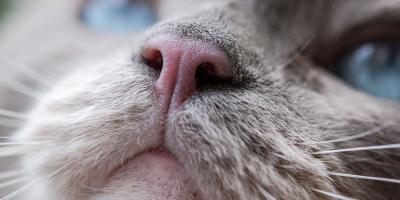Cat Stroke: Causes, Symptoms & Treatment


If your cat experiences a stroke, it can be alarming and it’s important to take them to the vet quickly so they can receive any treatment they need. Find out about the symptoms of stroke in cats you should look out for and the current treatment options in this guide.
Strokes in cats occur far less frequently than they do in humans, but a stroke is still classed as a medical emergency. If your cat experiences a stroke, it’s important to seek veterinary care quickly to make sure they have the best chance of recovery.
Find out all you need to know about cat stroke symptoms to watch out for and the treatment options currently available.
What Happens When a Cat Has a Stroke?
A cat stroke refers to the sudden reduction of blood supply to the brain. There are two types of cat strokes - ischemic, which is usually caused by a clot within a blood vessel, and hemorrhagic, which is when there is bleeding in the brain due to a blood vessel rupture.
The brain needs a constant supply of blood to bring it oxygen and nutrients and to remove waste from the brain’s cells. When the blood supply to a part of the brain fails, its function will be severely disrupted, and the tissue could even be destroyed.
What Causes Strokes in Cats?
There are several possible causes for strokes in cats, including:
- Head trauma
- Body trauma: this can dislodge fat or cartilage
- Brain tumor
- Tumors elsewhere in the body
- Heart disease
- Genetic defects
- Kidney failure
- Diabetes
- Parasitic infection such as lungworm
- Ingestion of toxins that cause bleeding, such as warfarin in rat poison
- Hyperthyroidism
- High blood pressure
- Cushing's disease (hyperadrenocorticism)
Cat Stroke Symptoms
The symptoms of your cat’s stroke will depend on whereabouts in the brain it occurs, how much brain tissue is affected, and how severe the effects are. Some symptoms you should be on the lookout for include:
- Circling
- Pressing their head against objects
- Unusual walking gait (sometimes affecting just one side of the body)
- Weakness or unsteadiness
- Head tilting
- Abnormal eye movements
- Unequal pupil sizes
- Coma
- Seizures
- In extreme cases, death
Many of these symptoms of cat stroke are not specific to this condition and can indicate other diseases, so it’s important that you seek veterinary advice. In particular, the condition of “vestibular disease” can cause some of these symptoms – a head tilt and loss of balance to one side, as well as rapid eye movements. Your vet will assess your cat and they’ll be able to advise you on how best to diagnose and treat your pet.
Diagnosing Cat Stroke
Once your cat is at the vet you’ll be asked about his or her medical history and symptoms which will help your vet diagnose the cause of the stroke. If the stroke is a result of trauma, these injuries may need to be treated too.
Your vet will carry out a full physical examination where they’ll check for injuries, organ enlargements, and any other symptoms. Blood tests may also be necessary to assess the cat’s condition and identify any underlying causes.
If kidney or liver issues are suspected, then further tests may be carried out on the urine. A fecal sample might be taken if parasites are thought to be the cause, thyroid levels might be checked for hormonal disorders, and your vet may recommend a CT or MRI scan to check the brain to assess the compromised blood vessels.
Treatment for Stroke in Cats
Your cat may need to be kept at the vets overnight to check that a second stroke doesn’t happen. During this time, they may need to have intravenous fluids and supportive care to promote healing.
Your vet will also need to treat the underlying cause of your cat’s stroke to try and stop it happening again. In some cases, life-long treatments or medications (particularly in the case of heart disease, hyperthyroidism, or diabetes) may be necessary.
Additionally, physical therapy may be necessary. Your vet will advise if this is needed and suggest exercises to help improve your feline’s movement.
The good news is that if your cat receives speedy treatment (within the first 24 hours), they’ll often make a full recovery within a few weeks. However, depending on the cause, they may be at risk of another stroke in future.
Preventing Cat Strokes
Strokes in cats can’t always be prevented, especially when they occur because of underlying health issues, but there are several things you can do to prevent strokes that are caused by external factors. For example, you should always ensure hazardous substances are out of your cat’s reach within your home and keep your pet up to date with antiparasitic treatments to protect against parasite infection. If you take your cat to the vet for regular health checks, you’ll be able to identify and manage any health conditions to reduce the risk of stroke.
That’s our guide to strokes in cats and the symptoms you should look out for. Want more cat health tips? Get advice from our experts with our other cat health articles.
Related articles

Earn myPurina Rewards with Every Purchase
Use your points for treats, toys, and gift cards with myPurina app.






